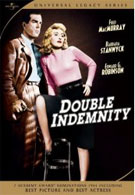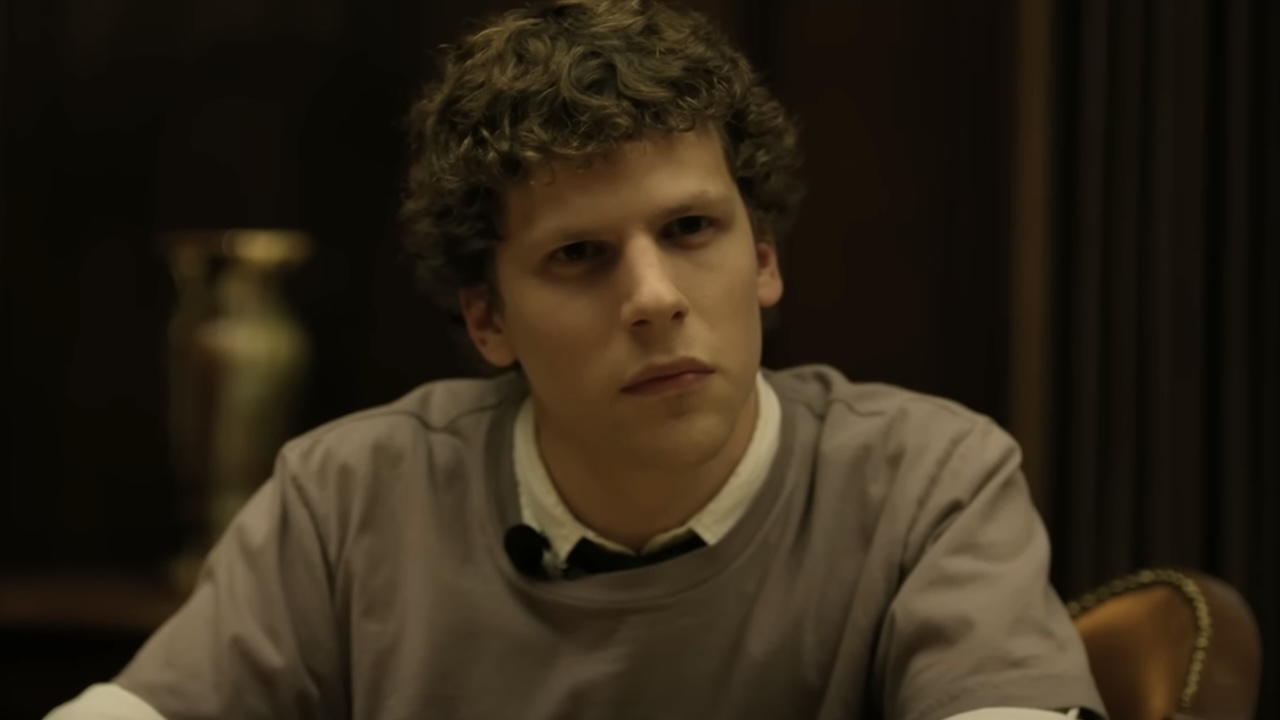A disillusioned anti-hero with questionable ethics meets a dame with gorgeous gams that can’t be trusted. Their rapid-fire banter filled with juicy double entendres crackles off the screen. A shadowy figure, gun in hand, emerges from a darkened alley. A palpable sense of doom, like a cloud of cigarette smoke, hangs over the proceedings. Our world-weary narrator shares his bleak and cynical take on the human condition while relating a sad tale of foul deeds and their dire consequences. This is the dark universe of film noir, and no film embodies its ethos more perfectly than 1944’s Double Indemnity, a deliciously wicked tale of infidelity, insurance fraud, and murder that delivers on all counts, now gloriously restored on a special edition DVD. Classic film noir, a term first coined by French critic Nino Frank in 1946, had its heyday in Hollywood from the early 1940s to the late 1950s, with Orson Welles’ 1958 masterpiece Touch of Evil widely considered to be the last of its kind. Inspired by the Depression-era crime fiction of authors like Dashiell Hammett, Raymond Chandler, and James M. Cain, these tales occupied a morally ambiguous world of pessimism and paranoia that reflected the post-WWII, nascent Cold War anxiety afflicting the nation.
Populated by corrupt cops, hardboiled private eyes, seductive femme fatales, and other assorted down-on-their luck schmoes, these films also share a trademark visual palette. Heavily influenced by German expressionist cinema, low-key black and white lighting schemes and starkly framed shots with wide-angle lenses create a disorienting effect, adding an almost suffocating sense of despair as events unfold. Often employing elliptical storylines with flashbacks and jaded voice-over narration, film noir wallows in the baser aspects of human nature with its stories of bungled heists, slippery betrayals, and murderous double-crosses.
There are so many great pictures from this era; The Maltese Falcon, The Big Sleep, The Killers, The Postman Always Rings Twice, White Heat, Kiss Me Deadly, and Sweet Smell of Success are just a few of the timeless classics of the genre. But if forced to choose one film that typifies the essence of early noir, few would argue with the selection of Billy Wilder’s gleefully vicious Double Indemnity, co-written with Chandler and based on Cain’s novella. It’s one of the first and finest examples of the “bad girl” flick, in which a woman of questionable virtues lures a weak-willed sucker into a get-rich-quick scheme with deadly and disastrous results.
Based on the actual 1927 criminal case of Ruth Snyder and her unfortunate husband, the film’s title finds its origin in an insurance policy clause which pays the beneficiary double in the event that their spouse dies accidentally. Fred MacMurray, probably better known as the affable dad in the TV series My Three Sons or for his comic turns in The Shaggy Dog and The Absent-Minded Professor, is cast shrewdly against type as Walter Neff, a shady insurance salesman with a weakness for pretty ladies. The lady in question is Phyllis Dietrichson, a conniving housewife played with relish by Barbara Stanwyck, who uses her considerable charms to enlist Neff in a scheme to murder her unsuspecting hubby and collect on the insurance. Edward G. Robinson also stars as Neff’s colleague Barton Keyes, the wily claims manager who smells a rat, leading to Walter’s inevitable downfall.
To say that Double Indemnity had an influence on subsequent crime films of the ‘40s and ‘50s would be a gross understatement – it is the mother of all film noir, giving birth to a litter of unholy offspring, none of whom ever quite achieve its fiendish perfection. To be fair, the genre produced a wealth of great films, including two more from Wilder himself (The Lost Weekend and Sunset Boulevard), but this is the one by which all others are measured. In classic noir fashion, the sordid story begins at the end, as a visibly wounded Neff uses a Dictaphone to confess his crimes to his friend Keyes. The flashback structure lends a distinct air of fatalism to the proceedings because we already know that things are going to turn out badly. Neff’s narration constantly alludes to this notion of predestination, a nagging feeling that the wheels are in motion and nothing’s going to stop this cruel machine.
What’s amazing is how much we find ourselves sympathizing with the venal Neff despite his many sins. Casting the amiable MacMurray in the fall guy role was either a happy accident or pure genius on Wilder’s part. And what can you say that hasn’t already been said about Stanwyck? She positively smolders as the amoral siren with the shiny anklet and cheap blonde wig, making a memorable entrance clad only in a towel, effectively sealing the hapless Walter’s fate. He is instantly smitten, and the witty repartee that follows is the stuff of cinematic legend:
Walter: You’ll be here too?
Your Daily Blend of Entertainment News
Phyllis: I guess so, I usually am.
Walter: Same chair, same perfume, same anklet?
Phyllis: I wonder if I know what you mean.
Walter: I wonder if you wonder.
Wilder and Chandler’s script is practically bursting with these razor-sharp exchanges and classic lines that achieve their own sort of hard-bitten poetry. Walter’s narration paints an indelible portrait of a weak and corrupt man painfully aware of his imminent demise – “Suddenly it came over me that everything would go wrong. It sounds crazy, Keyes, but it’s true, so help me. I couldn’t hear my own footsteps. It was the walk of a dead man.” Does it get any better than that?
Neff’s confession to Keyes adds yet another layer of nuance and depth to an otherwise seedy tale of lust and larceny and provides the film with its emotional core. It’s made clear early on that these two men genuinely like and respect one another. So when Keyes is forced to acknowledge Walter’s betrayal in the surprisingly poignant climax, events suddenly take on an undeniably tragic dimension. Robinson conveys this sense of loss beautifully as he stoops to light one last cigarette for his fallen friend and the credits roll.
So many noir elements found in Double Indemnity seem like clichés now, but it’s important to note that many found their genesis in this film. John F. Seitz’s gorgeous black and white cinematography employs shadowy interiors and chiaroscuro lighting (sharp contrasts between dark and light) to great effect, creating visual markers that reflect each character’s internal conflicts and motives. How often have we seen the shadows of Venetian blinds across an actor’s face hint at a sense of imprisonment? How many times has a criminal tried to flee the scene only to find that his car suddenly won’t start? Stanwyck’s femme fatale remains the gold standard of come-hither sexuality that would be copied by the likes of Veronica Lake, Lana Turner, and Kathleen Turner in years to come.
A distinguished list of neo-noir films like Chinatown, The Long Goodbye, Blade Runner, Body Heat, Memento, and the recent gem Brick all owe a debt of gratitude to Double Indemnity for paving the way with its heady mix of brutish behavior, acerbic dialogue, and an utterly nihilistic worldview. If you haven’t already seen it, do yourself a favor and check it out. That’s right, doll face, I’m talking to you. Hop to it or you’ll be taking a dirtnap faster than you can spit, palooka. I’m rotten, see, rotten to the core, so don’t try me. OK, so I’m no Raymond Chandler, but you get the picture. Now go get the picture. The two-disc special edition of Double Indemnity, including a crisp digitally remastered picture, is chock full of intriguing bonus features. Unfortunately, and this seems to be the case with numerous classic films, it’s only available in the full screen format. Beginning with a brief introduction by the always urbane Robert Osborne, host of Turner Classic Movies, the extras provide a wealth of information, some trivial and some essential, about the film’s origins as well as the overall history of noir.
“Shadows of Suspense” is a half-hour documentary that calls on some of the giants of film history and production to sing the praises of the picture. Authors like James Ellroy and directors like William Friedkin share trenchant insights into the film’s greatness while offering several entertaining anecdotes about the struggle to bring it to the screen. We learn much about Wilder and Chandler’s utter contempt for one another, the limitations imposed by the puritanical Production Code, the furor caused by Stanwyck’s hideous wig, and the tortuous casting process.
Disc One also contains two feature commentaries which, quite frankly, become a bit redundant after a while. Film historian and Time magazine critic Richard Schickel offers the best of the two, focusing on an analysis of the improvements that the film version makes over Cain’s novella and frequently referencing specific shots and bits of dialogue. The second commentary, featuring screenwriter Lem Dobbs (The Limey, Dark City, The Score) and historian Nick Redman, has an annoying tendency to lapse into boring digressions of name-dropping and old Hollywood anecdotes, rarely acknowledging what’s happening onscreen.
Disc Two offers the 1973 made for TV movie starring Richard Crenna as Neff, cigar-chomping Lee J. Cobb as Keyes, and British actress Samantha Eggar hopelessly miscast as the murderess Phyllis. An almost shot-for-shot remake that includes most of the original dialogue, this turkey is notable for its utter lack of visual imagination and begs the obvious question: why bother? Shot to look like a bad episode of Barnaby Jones with its swinging ‘70s wardrobes and hideous plaid couches, one wonders what the filmmakers could have been thinking. Crenna’s actually not bad, but too often the overripe dialogue has an anachronistic feel in the midst of all the bell bottoms and sideburns.

